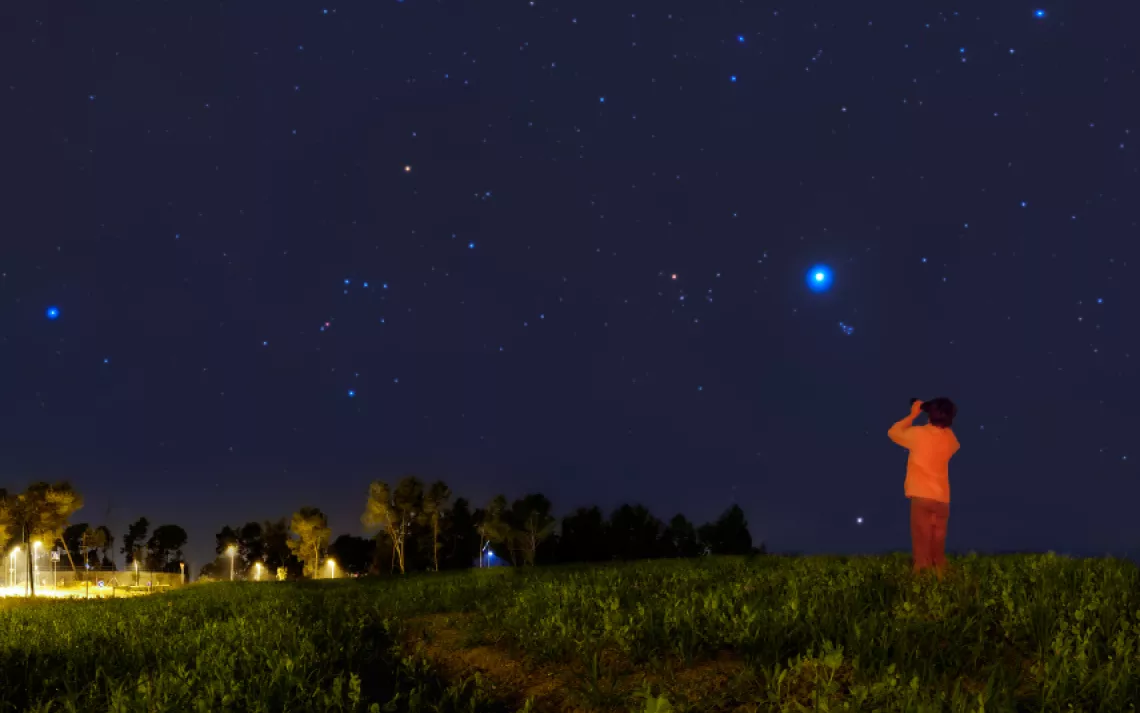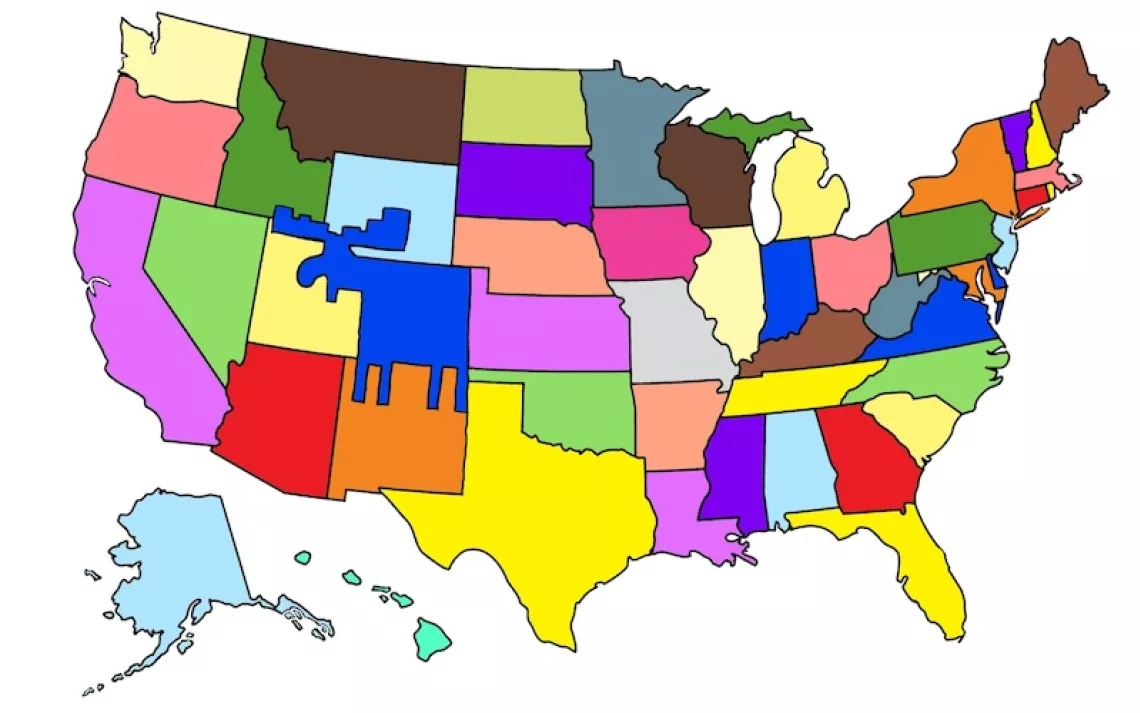A Stack of Planets and a Celestial Ghoul for October

Photo by iStock/peresanz
The exact times of sunrise and sunset vary across the United States, but generally in October the sun doesn't rise until about 7am, and not until 7:30am by the end of the month. This means that if you wake up around 6 am for work and school, you’ll get to see a lot of planetary activity happening in the east.
At the beginning of the month, the planets line up above the eastern horizon, with Venus brightest and highest above the Earth, then reddish Mars below it, and Jupiter below Mars. Eventually, Mercury enters the picture at the bottom of the stack.
On October 8, the crescent moon is just above Venus, with the star Regulus to the left. Before sunrise on October 9, you can see that the moon has moved down until it is nearly even with Mars. By October 10, the moon is below Jupiter and above Mercury, which is the third brightest of the planets in the lineup, edging out Mars. On October 11, the crescent moon has almost disappeared to new phase, but you can still catch it just below Mercury.
Meanwhile, the planets have been slowly shifting. Mars and Jupiter are moving closer together and will be less than half a degree apart on October 17 and 18. Venus is also closing in, passing Jupiter on the 25th and catching up to Mars by the end of the month.
For the last 10 days of October, Venus, Mars, and Jupiter will hang together tightly; Venus will be the brightest and Mars the dimmest. The two will scoot away from Jupiter and be less than a degree apart on the morning of November 2.
After all this activity, Saturn will be the only bright planet left in the evening sky, and it won't hang around too long after sunset. On October 15 and 16, a crescent moon is first to the lower right, then to the upper left, of the Ringed Planet.
Saturn is entering Scorpius, a summer constellation that contains many deep-sky wonders of the Milky Way. Use a telescope to spot star clusters and nebulae in this region of sky before it disappears below the horizon for the winter months.
One star that always attracts attention on autumn evenings is Capella in the north-northeast. It's unmistakable for a few hours after dark when it is not far from the horizon. Viewed through the thick layers of our atmosphere, it emits flashes of color like a distant firework. Capella is considered the brightest star in the constellation Auriga the Charioteer, but it's actually not one star but four. It is a binary star system where two stars revolve around each other and each pair also revolves around each other.
Overnight from October 21 to 22, the Orionid meteor shower will peak. The Orionids are best viewed after midnight, with 10 to 20 meteors visible per hour. If you can trace their bright trails backward toward their point of origin, they will appear to have come from a region near Betelgeuse in Orion.
The full moon occurs October 27 at 5:05 am PDT. By Halloween, the waning squashed moon will be rising around 9 pm above the body of Orion and near his overstretched arm. Together they'll look like a celestial ghoul carrying his head as a lantern.
 The Magazine of The Sierra Club
The Magazine of The Sierra Club







